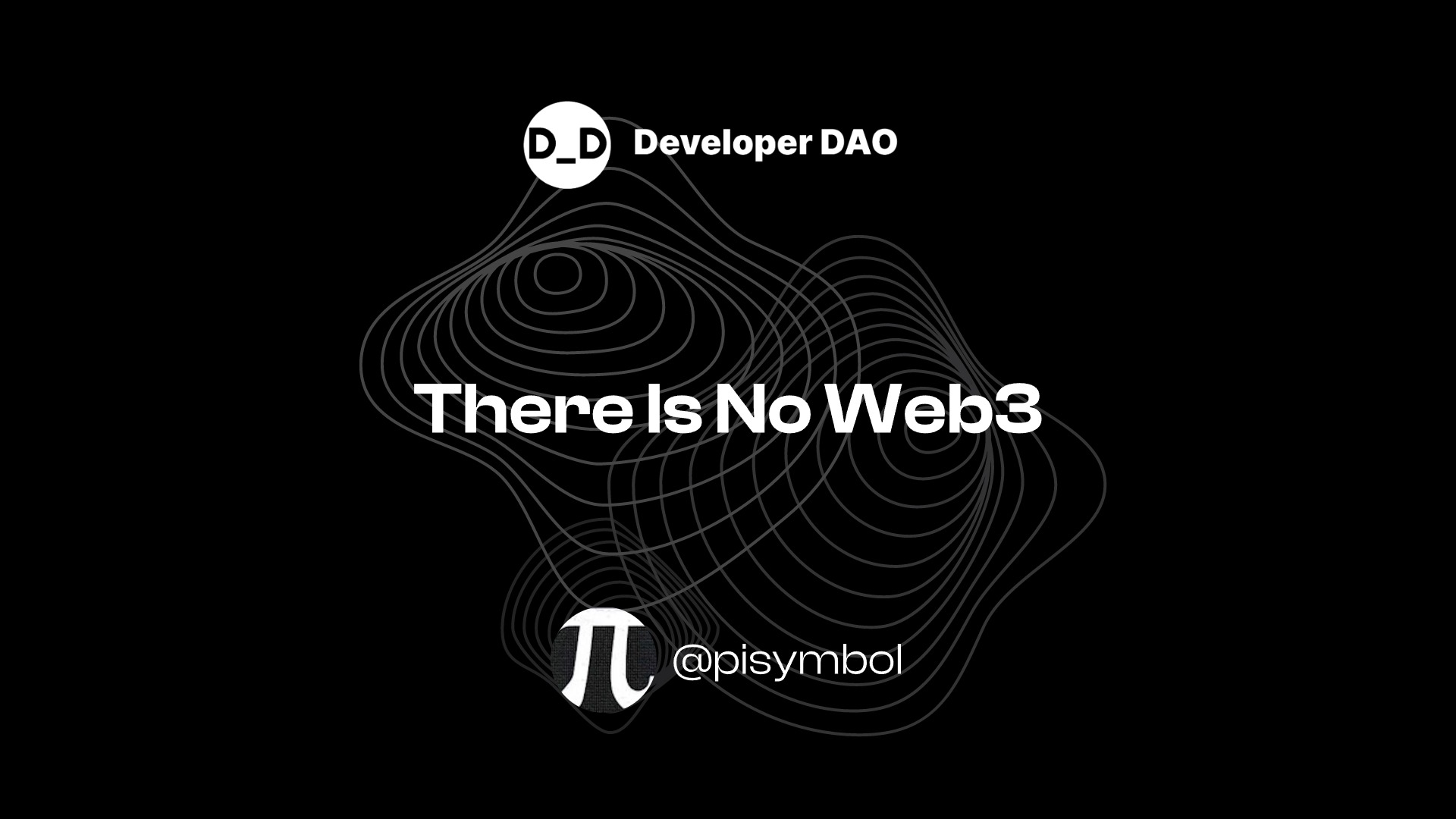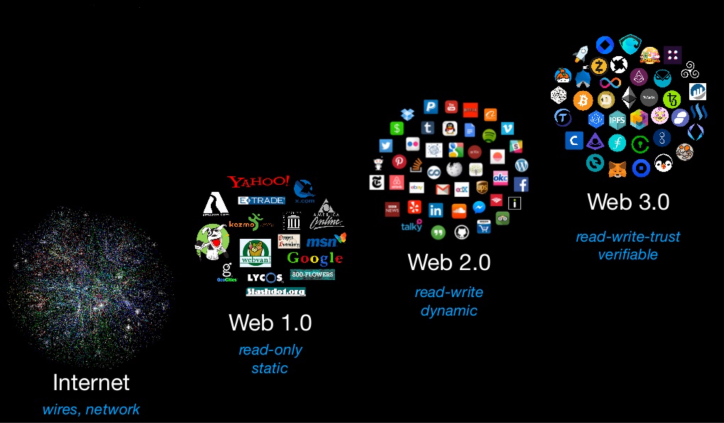There Is No Web3
 Alexander Sack
Alexander Sack

Believe it or not, the term Web3 was first used in a 2014 blog post by Dr. Gavin Wood, the co-founder of Ethereum and creator of the Polkadot network, where he reimagined the Web as a "Secure Social Operating System".
In that post, Dr. Wood defines Web3 as a trustless Internet that replaces IP addresses with hashes, accomplishes network connectivity through incentivized peers competing to forward cryptographically signed messages, and lets users interact pseudonymously through a worldwide consensus engine.
Despite being a fascinating read in its own right, his concept of a Web3 didn't take the industry by storm and, for the most part, was all but forgotten.
It wasn't until really the rise of the NFT in 2021, when the number of unique buyers and sellers rose from around 8,000 to over 1.15 million that the term went mainstream.
Ironically, most media outlets' adoption of Web3 had nothing to do with Dr. Wood's decentralized vision he outlined almost a decade earlier but instead served as a catch-all phrase to lump several associated blockchain technologies together.
Yet despite becoming part of the vocabulary, the term "Web3" is still very nebulous, depending on who you're talking to.
For a futurist or visionary, Web3 is all about how Tim Berners-Lee's original concept of a semantic Web has evolved from being read-only to now read-write and soon read-write-trust-verify.
Consequently, users will have far more control over their digital identities, and thus big tech giants won't be able to exploit personal data for profit. DAOs will govern the world and relegate fiat currency to obscurity.
Tokenize everything!
For a technologist, however, Web3 describes a tech stack that contains some permutation of blockchain, smart contract, and wallet. How this trifecta can seamlessly integrate and ultimately supplant Web2 serves as their primary muse and bane.
The line between a web service and a smart contract then becomes blurry, and a blockchain is no longer a magic black box that spits out currency but, instead, just a decentralized database that achieves ACID in uniquely different ways. Although a wallet now comes in both "hot" and "cold" varieties, it is still the primary source of user interaction and confusion within Web3.
The battle rages on.
Finally, for an investor, Web3 does not describe some NFT-gated metaverse nor utopian decentralized shopping experience. Instead, it represents a far more pedestrian idea - a digital asset with monetary value (fiat or otherwise), or "crypto" for short.
In many ways, Web3's identity is suffering the same growing pains as Web2's did before. Back then, Web2 advocates had just as grandiose ideas they didn't flesh out completely: Rich, dynamic webpages that fostered users to build community through social media; users would no longer be passive consumers of the Internet but became active participants or "netizens" if you will.
Like Web3, it also introduced a cornucopia of strange cryptic acronyms such as AJAX, REST, SaaS, and SSO, none of which had an immediate impact when first introduced and all of which had their fair share of critics and naysayers too.
What ultimately made Web2 successful was the cottage industry of developer frameworks that removed the friction of adopting the idioms that defined it.
Companies like Google and Facebook, as well as the open-source community at large, offered several key technologies that enabled developers a clear path forward to Web2. For example, Facebook's React and Google's Angular frameworks gave Javascript developers the tools to build those rich, engaging websites. Before anyone could "like this post" and "subscribe", Web2 simply became "the Web".
The main takeaway is that the sooner the Web3 community loses its tribalism and focuses on building standardized frameworks and solutions within the Web3 ecosystem, the faster developer and user adoption will be.
Current Web2 developers shouldn't fear wallet interaction but welcome it - paying with your wallet should be as mundane as using your credit card. Joining a DAO is no more thrilling than joining a Facebook group. Though blockchains and smart contracts are low-level primitives that empower decentralization, they aren't necessarily the face of it.
Ironically, just like when the Web1 bubble ultimately burst, the current crypto winter we are all enjoying has had the by-product of realigning the Web3 industry to focus more on the practical than the existential.
Node providers are moving up the stack, providing higher-level services built on top of raw blockchain data to foster development. Major cloud providers are releasing Web3-focused products and services that ease the transition from a purely centralized user journey to a semi-decentralized one. Various open-source projects give Web2 developers the tools and frameworks needed to at least dabble in Web3, and the number of high-quality Web3-focused online tutorials and documentation has never been so abundant.
Please repeat after me: There is no Web3. There is only the Web. gm
Subscribe to my newsletter
Read articles from Alexander Sack directly inside your inbox. Subscribe to the newsletter, and don't miss out.
Written by

Alexander Sack
Alexander Sack
Throughout my career, I've worked on a lot of high-performance software including various UNIX based operating systems, deep packet inspection, filesystem indexing and search, as well as more recently, enterprise-scale machine learning systems and blockchain. Never a dull moment.
